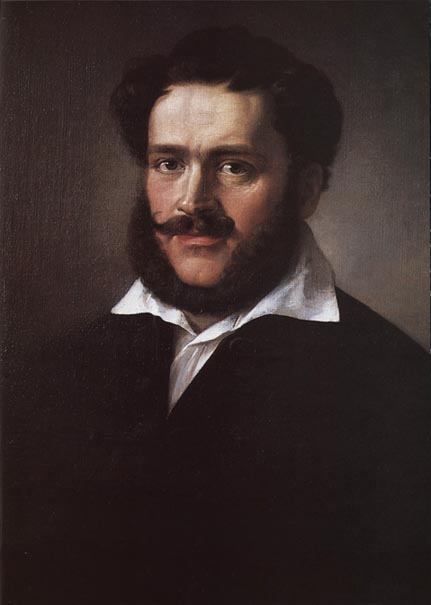
Bolyai János
Bolyai János was a world-renowned scientist who played an important part in the history of mathematics due to his theories that put the bases of non-Euclidian geometry. His destiny was closely linked to that of his father”™s, Bolyai Farkas, who was his teacher and introduced him to the science of mathematics. János was born in Cluj on December 15, 1802. He grew up and studied in Tîrgu-Mureș where his father was a professor at the mathematics, physics and chemistry department. At nine, he began studying mathematics with his father, but he also showed talent for playing the violin. In the fall of 1818, when he was only 16 years old, he signed up for the Technical Military Academy of Vienna. After graduating, on September 6, 1822, Bolyai János was appointed second lieutenant with the engineers”™ core and was sent to the Direction for Defense Works of Timișoara. His work as military engineer was not entirely satisfactory for Bolyai, so that he channeled his attention and energy to the theory of parallels on which he wanted to publish a paper. After being away from home for 6 years, in 1825 Janos returned to Tîrgu-Mureș for a short visit. On this occasion, he showed his father the manuscript of his paper. Farkas tried to convince his son to abandon his obsession with the theory of parallels that he considered a lost cause. This was the beginning of a series of conflicts between the two. Janos did not follow his father”™s advice and this reflected onto his professional activity, more and more neglected. His paper was published in Tîrgu-Mureș in 1831, and in 1832 it was added as Appendix to his father's book entitled Tentamen. The enormous scientific value of this work resides in the fact that it represents the basis of the theory of non-Euclidian geometry. The paper was also sent to the famous mathematician Gauss, his father”™s old friend. Even though Gauss appreciated Janos”™ ideas, the latter found his answer to be reserved and discouraging. In 1833, when he was 31, János retired for medical reasons. His continuous state of nervousness and his hypochondria made him unfit for the military. He returned to Tîrgu-Mureș not in the best state of mind. His encounter with Rozalia Orban, with whom he fell in love instantly, proved to be auspicious. He wanted to marry her, but his financial shortcomings would prevent him from being able to support a family. His father refused to give him part of his inheritance, which led to further arguments between the two. In 1834 he moved with Rozalia to the Bolyai mansion at Domald, where he would spend a quiet period. He started to write The Science of Space, a work by which he aimed to establish the basic principles of geometry. In the Introduction he chronicles a history of parallels. He decided to participate in the contest of the Scientific Society of Leipzig with the issue of perfecting the geometric theory of imaginary sizes. His paper is not accepted, which was a great disappointment to Janos. As a strike of bad luck, the theory of quaternions which he had included in the paper, was made public 17 years later by an Irish mathematician, William Rowan Hamilton who became famous for it. Toward the end of his life, marked by his many failures and disappointments, Bolyai János attempted to systematize utopian theories on human happiness in his work: The Doctrine of General Happiness. Bolyai János died on January 27, 1860, alone and abandoned, not having been granted a well-deserved recognition of his scientific discoveries. His thousands of pages of notes were passed on to the Reformed College of Tîrgu- Mureș. Seven years after his death, the Appendix would be translated into French and then Italian. Today Bolyai János”™ value is generally recognized as he is considered a classic of universal science. Bibliography: L. Kocziány- Cei doi Bolyai în vol. "Profiluri mureșene", vol. I, Tîrgu-Mureș, 1971.

